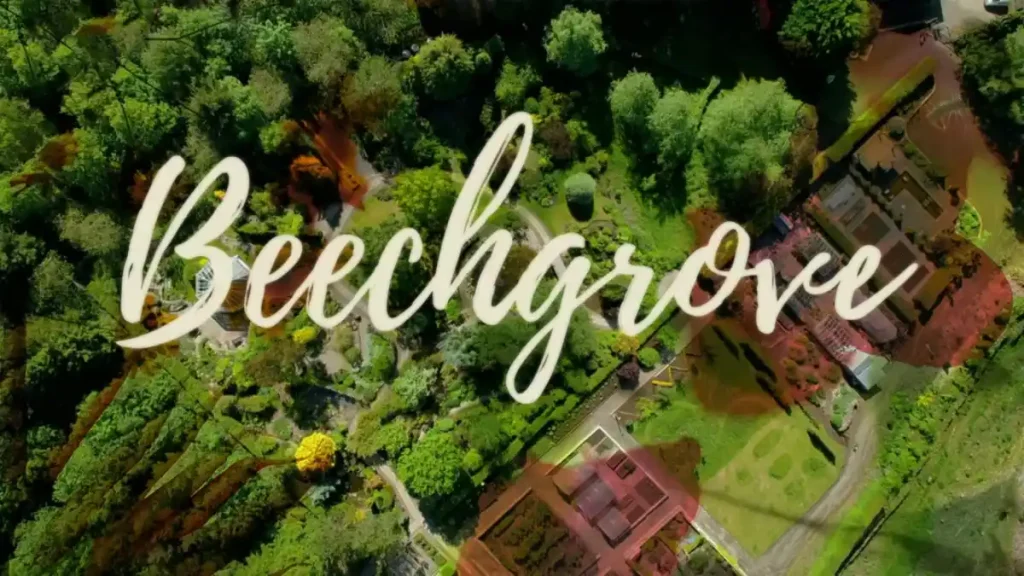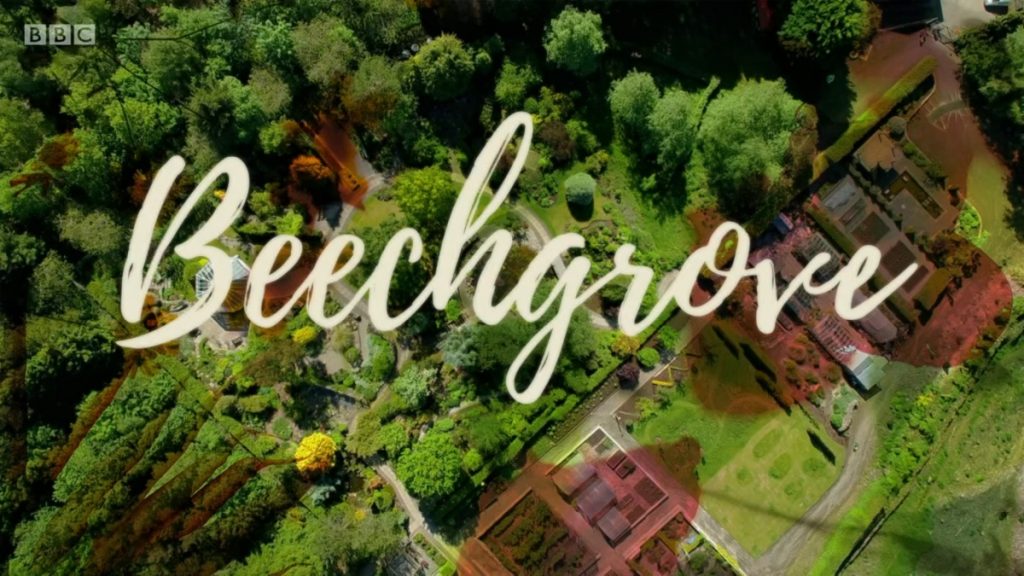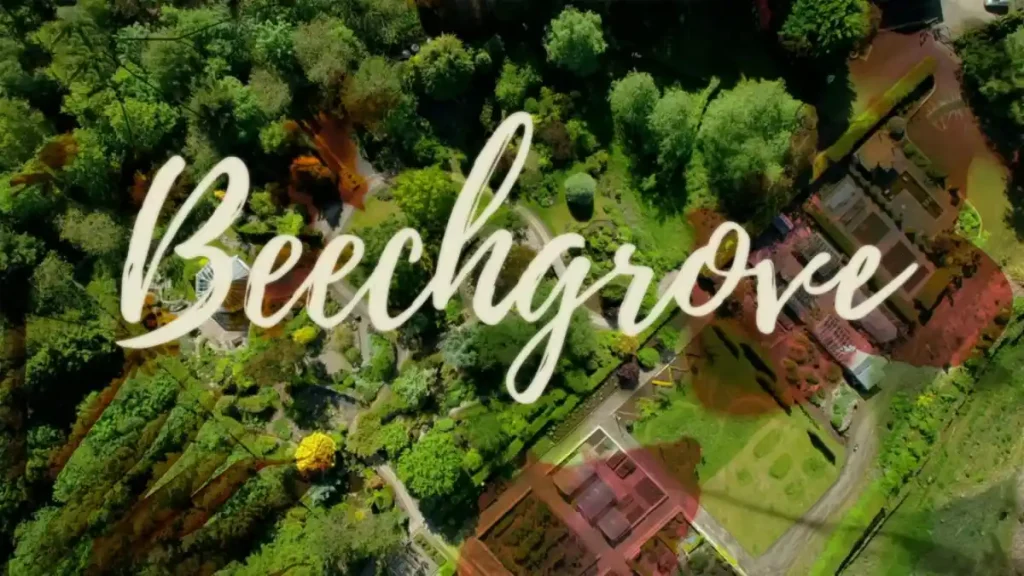The Beechgrove Garden 2023 episode 25 – As the seasonal tapestry unfolds, it beckons a moment of reflection and admiration for the year’s botanical achievements. The seasoned horticulturist, George Anderson, with decades of experience under his belt, is gearing up to provide a comprehensive examination of the diverse range of plants and the abundant produce that 2023 has gifted us with. All of this botanical exploration is taking place in the picturesque and sunlit enclave of Joppa, where nature flaunts its beauty.
Meanwhile, at the revered Beechgrove gardens, a hive of activity is palpable. The ever-enthusiastic Diana Yates, renowned for her dedication to plant life, collaborates with the garden’s maestro, head gardener Scott Smith. Their journey together leads them to the heart of the polytunnel, a sanctuary of greenery teeming with life and potential. Their responsibilities extend beyond this verdant oasis, as they also embark on the meticulous task of pruningand shaping the garden’s expansive beech and yew hedges, ensuring they maintain not only their aesthetic charm but also their robust health.
For viewers craving a dose of inspiration and a visual feast, the show promises to transport them to two incredibly contrasting but equally mesmerizing gardens. Initially, the expedition takes us to a stunning and resilient garden plot nestled amidst the dramatic landscapes of the Isle of Skye. Here, viewers will witness firsthand the harmonious blend of nature’s raw beauty with human ingenuity. Following this, the narrative shifts to a balmy tropical sanctuary located in the heart of Moray. This lush paradise showcases a cornucopia of exotic plants and foliage, offering a tantalizing glimpse into what feels like a distant tropical land, yet it’s beautifully situated within Scotland’s borders.
The Beechgrove Garden 2023 episode 25 – A Visual Feast for the Senses
As summer melts into autumn, nature’s palette transforms in preparation for the approaching winter. The changing seasons beckon us to pause and admire the year’s botanical achievements before this fleeting beauty fades. For decades, George Anderson has shared his horticultural wisdom and enduring passion for plants through The Beechgrove Garden television program. His enthusiasm remains undiminished over time, much like a hearty oak tree weathering the storms. This year, George has been immersed in the plant life flourishing around his Joppa garden, nestled along the Scottish coastline near Edinburgh. Here, he has cultivated a welcoming oasis where flowers and vegetables thrive in the long, sun-filled days of Scottish summers.
As George reflects on the fruits of his labor in Joppa, there is a hive of activity underway at The Beechgrove Garden studio gardens. Diana Yates, known for her tireless dedication to nurturing plants, has been busy collaborating with the garden’s head gardener, Scott Smith. Together, they have been focused on tending to the oasis of greens ensconced within the garden’s polytunnel. This plant sanctuary offers refuge from harsh weather and hungry critters, allowing vegetables to flourish. Diana and Scott have also embarked on the meticulous task of pruning the garden’s extensive beech and yew hedges. Their careful attention ensures the hedges maintain their aesthetic charm and robust health during the colder months ahead.
A Seaside Garden Crafted by Nature and Nurtured by Human Hands
In this week’s episode, viewers are transported from the studios of The Beechgrove Garden to the dramatically beautiful Isle of Skye. Here, nestled within the island’s breathtaking landscapes, lies a charming seaside garden lovingly nurtured by its owners. The juxtaposition of untamed natural beauty against a carefully cultivated garden plot highlights the harmonious balance between human ingenuity and nature’s splendor.
The owners, Joyce and Brian Heggie, have been refining their steeply terraced garden for over two decades. Their initial motivation was purely practical – Brian built raised vegetable beds to make gardening more accessible for Joyce following a car accident. However, this small act of care quickly blossomed into a magnificent garden overflowing with flowers and food. The Heggies emphasize a no-dig approach, using layers of compost to enrich the soil rather than disrupting it through tilling. This method prevents damage to the complex underground ecosystem of microbes and critters that keep soil healthy.
The Heggies have also erected an expansive polytunnel to shelter heat-loving plants that would otherwise struggle in the cool, maritime climate. Within the polytunnel, plump squashes dangle from vines and ethereal sweetpea blooms scent the air. The Heggies artfully intersperse edibles with ornamentals to create a feast for the eyes and taste buds. Outside, their flower garden bursts with brilliant colors and tempting textures. Joyce extols the virtues of two of her favorite flowers – the elegant purple spires of knautia and the unique, metallic blooms of cerinthe. Saving their plentiful seeds ensures she can sow more of these beauties next year.
Tailoring Plant Choices to Thrive in Challenging Coastal Conditions
The Heggies’ seaside garden demonstrates thoughtful plant choices that can flourish despite the challenges of a maritime climate. Cool, windy conditions coupled with salty air limit options compared to gardens in more sheltered locations. However, with careful selection, even coastal plots can overflow with flowers and greenery.
Hardy shrubs adapted to harsh weather, such as heather and hydrangea, add year-round structure and provide shelter for more delicate specimens. Using raised beds aids drainage in sodden soils and protects plant roots from waterlogging. Cold frames and polytunnels offer extra insulation when frost threatens tender vegetable seedlings and heat-loving annuals.
Plants boasting silver or fuzzy foliage, like artemisia, cistus, and stipa grasses, withstand desiccating winds with grace. Ornamental grasses and succulents are other excellent choices, unfazed by sandy, fast-draining soils. Drought-tolerant plants native to Mediterranean climates feel right at home. Additionally, flowering perennials suited to cottage gardens, such as dianthus, foxgloves, and hollyhocks, inject vibrant pops of color.
Coastal plots need not be devoid of tropical touches. Palm trees and other exotic specimens can thrive if shielded from the harshest weather in a greenhouse. With astute plant choices tailored to site conditions, seaside gardens can overflow with beauty and bounty.
A Photographer’s Paradise Capturing Nature’s Rugged Beauty
In addition to the challenges posed by its climate, the Heggies’ garden location on the Isle of Skye offers one key benefit – absolutely breathtaking scenery. Photographers would be hard-pressed to find a more dramatic backdrop. Craggy cliffs and velvety green hills cascade into the shimmering sea below. One can almost hear the cries of soaring seabirds riding the brisk ocean breezes.
These vistas of raw, untamed beauty perfectly complement the Heggies’ carefully curated garden. There is a synergy between the wild landscape and the terraced beds, polytunnels, and thoughtfully placed accents. Each element accentuates the other to create an effect grander than the sum of its parts. It is a garden that celebrates both the restraint of human creativity and the exuberance of nature’s bounty.
For viewers, this peek into the Heggies’ seaside sanctuary offers inspiration coupled with escapism. Few gardens can compete with such majestic scenery. However, we can aspire to strike a similar balance between control and chaos in our own outdoor spaces. With mindful plant choices, rambunctious nature can be encouraged rather than conquered. A garden’s true charm shines through when we appreciate Mother Nature as our ultimate collaborator.
Conjuring an Exotic Paradise in the Heart of Moray
Following the rugged allure of Skye’s coastal vistas, this week’s Beechgrove Garden takes viewers in a wildly different direction. We journey to an unexpected tropical oasis situated in Simon Mitchell’s garden within Moray, Scotland. Surrounded by bamboo groves, palm trees, and outrageously large-leaved exotics, one feels suddenly transported to the tropics. However, this is no mirage – Mitchell has managed to recreate a tropical jungle paradise, complete with steamy conditions prime for exotic specimens.
Mitchell attributes his lifelong plant obsession to childhood memories amidst the lush flora of Hong Kong. As an adult living in Scotland, he was determined to replicate at least a taste of the tropics in his own garden. With Moray’s slightly milder climate compared to other parts of Scotland, Mitchell realized this dream could become reality. A greenhouse forms the backbone, sheltering tender plants from winter’s chill. Hundreds of bags of compost amend the sandy soil and retain moisture. Strategic wind barriers allow figs, gingers, and bananas to flourish.
Tailoring Conditions to Support Tropical Treasures
Mitchell demonstrates insightful techniques to transform his slice of Scotland into a steamy jungle getaway. Several key factors underpin the success of exotic specimens in this temperate climate. Firstly, soil preparation is paramount. Mitchell improves the naturally sandy, free-draining soil by digging in huge amounts of compost. Compost acts like a sponge to increase moisture retention, critical for fast-growing tropical plants.
Providing the right nutrients is also essential. A balanced organic fertilizer applied in spring supplies a slow-release nutritional boost. During the growing season, Mitchell gives his jungle a liquid nitrogen feed to fuel the rapid leaf growth characteristic of tropical natives. A thick mulch of leaves and grass clippings covering the soil mimics the humid jungle floor. The mulch retains moisture and insulating bare soil from temperature extremes.
Finally, creating windbreaks provides essential protection. Bamboo groves and other dense plantings shelter tender foliage from desiccating winds. A greenhouse allows overwintering of specimens unable to handle frost. With these adaptations in place, Mitchell enjoys bountiful harvests of enormous bananas, juicy figs, and brilliant blooms more expected to be seen in Costa Rica than Caledonia.
Achieving Remarkable Growth Rates in Challenging Conditions
Beyond simply surviving, many of Mitchell’s tropical specimens display astonishing growth rates despite Scotland’s climate being far from ideal. For example, his banana plants have shot up four meters in just a few months. This rapid vertical ascent is thanks to the banana’s unique form of stem growth. Rather than having a woody trunk, banana stems are composed of tightly wrapped layers of leaf bases. Leaves emerge from cigar-like buds, unfurling to full size in an instant. This telescoping growth enables bananas to quickly outpace competitors.
Mitchell’s towering Paulownia tree has also skyrocketed upwards at an incredible pace. Its huge, butterfly-shaped leaves capture ample sunlight to power this quick growth. Another key adaptation is the tree’s lignotuber – a swollen, potato-like mass at its base. The lignotuber stores energy and nutrients, enabling rapid regeneration even if the top growth is damaged. Such unique anatomical features allow Paulownias to dominate their surroundings. Mitchell’s planta are clearly enjoying the Scottish version of the tropics.
Achieving a Balanced Ecosystem: Shelter, Sun, and Satisfaction For All
Tropical gardens require careful planning to avoid one plant’s success coming at another’s demise. Mitchell demonstrates thoughtful design to nurture biodiversity and balance. Firstly, he includes a mix of large and small plants to occupy different niches. Small shade-lovers like impatiens thrive under the dappled light beneath bananas and Paulownias. Secondly, placing trellises and pergolas near sun-worshipping plants prevents them from overshadowing less vigorous neighbors.
Careful pest control also promotes an ecological balance. Manual removal of slugs and aphids rather than pesticides minimizes risks to beneficial insects. Mitchell allows blackfly to remain on bananas, accepting minor aesthetic damage to support biodiversity. Such tolerance demonstrates a gardener in tune with the ecosystem as a whole.
This holistic perspective is clear in Mitchell’s approach. Rather than battling nature, he works alongside it for a mutually beneficial relationship. Mitchell’s garden is a testament to thoughtful design where plants help each other thrive, and beauty arises from unity with nature’s complex web. The results are more magnificent than any individual plant could achieve alone.
A Botanical Time Capsule: Procuring Seeds for the Future
Tropical gardens require special care to sustain their unique biodiversity. Because many exotic specimens are not winter-hardy in Scotland, preserving seeds is vital insurance against loss. This practice also safeguards rare plant varieties at risk of extinction in their native range. Mitchell’s garden serves as a botanical time capsule protecting precious tropical genetics.
Some of Mitchell’s plants may never flower in Scotland’s climate. However, he can collect seeds from outdoor-grown specimens and sow them the following spring. Other plants only flower indoors or during exceptionally warm summers. By gathering ripe seedpods and storing seeds correctly, Mitchell can continue propagating his rarest treasures. He has even obtained newly collected seeds of bamboo species that simultaneously flowered and died off worldwide. This tactic averts permanent loss of unique plant genetics.
Mitchell also stresses the importance of diversity. He grows seven bamboo varieties to avoid disease wiping out the entire collection. Such foresight and dedication to continuity planning ensures the survival of rare species for generations to come. Nobody knows for certain which plants may hold untapped potential to aid humanity in the future. Conservationists like Mitchell are invaluable botanical custodians, preserving precious diversity for the uncertain road ahead.
Implications for Climate Change: Expanded Growing Horizons
Cultivating exotic, warmth-loving plants enables gardening enthusiasts like Mitchell to transform their slice of Scotland into a steamy jungle paradise. But beyond satisfying personal plant obsessions, such heated hideaways offer clues to navigating the realities of climate change. Britain’s weather patterns are in flux, with warmer and wetter conditions expected in coming decades. Understanding how to support tropical plants in temperate zones will become increasingly useful across the gardening world.
Mitchell’s successes underscore the importance of microclimates. With care, small pockets of shelter allow tropical and subtropical species to thrive despite an inhospitable wider region. Heat-trapping polytunnels and greenhouses create customizable environments unaffected by broader weather shifts. Adaptable gardeners can continue enjoying exotic fruits and blooms through strategic microclimate modifications.
Creativity and flexibility will be vital. As climate instability progresses, reliably perennial plants may act more like short-lived annuals. Overwintering structures will transition from emergency backup to mandatory mainstays. Expanding plant palettes to include heat-loving species could make gardens more resilient to extremes. Innovators like Mitchell push the boundaries of what’s possible and pave the way for others. The horizon for growing challenging species in Britain’s warming climate appears bright.
Conclusion: A Celebration of Nature’s Gifts and the Human Spirit
This week’s glimpse into The Beechgrove Garden highlighted the remarkable fruits of human passion and nature’s splendor. George Anderson’s enduring enthusiasm for plants across decades attests to the joys of the gardening journey. Diana Yates and Scott Smith’s meticulous care of the studio gardens reflects dedication to their craft. The Heggies show that coastal plots, with care, can overflow in beauty. And Simon Mitchell reminds us that with creativity, even the humblest plot can be transported into an exotic wonderland.
These examples underscore the profound rewards of connecting to the earth through gardening. Participating in nature’s cycles of renewal offers a deep sense of purpose and belonging. By embracing nature as partner rather than foe, our efforts bear sweeter fruits. Our gardens become celebrations of life’s boundless complexity and blessings.
No single formula guarantees success. Each gardener must observe their unique conditions and co-create in harmony with nature’s mysteries. But armed with patience and determination, we can transform even the most challenging site into a personal haven abloom with possibilities. May the successes featured on The Beechgrove Garden continue to ignite horticultural passions and heighten appreciation for our preciously fleeting time spent cultivating this living earth.
Frequently Asked Questions
Who is George Anderson from The Beechgrove Garden?
George Anderson is one of the main presenters on the popular Scottish television gardening show The Beechgrove Garden. He has appeared on the show for decades and is renowned for his horticultural expertise and warm personality. George is based in the coastal area of Joppa near Edinburgh and often features his own garden on the show.
Where is Joppa located?
Joppa is a small coastal town located in East Lothian, Scotland, near the city of Edinburgh. It sits along the Firth of Forth overlooking the North Sea. George Anderson’s garden featured on The Beechgrove Garden TV show is located in Joppa. The town is known for its lovely coastal views.
Who is Diana Yates from The Beechgrove Garden?
Diana Yates is one of the presenters on the BBC TV gardening show The Beechgrove Garden, which is filmed near Aberdeen in Scotland. She is an expert horticulturist with extensive knowledge of plants. Diana is especially passionate about flowers and specialty gardens. She has been with the show for many years.
Who is Scott Smith from The Beechgrove Garden?
Scott Smith is the Head Gardener at The Beechgrove Garden TV show’s studio gardens located near Aberdeen, Scotland. He collaborates closely with presenters like Diana Yates to care for the diverse gardens and lawn areas at the Beechgrove studios. Scott provides essential horticultural expertise.
What is The Beechgrove Garden?
The Beechgrove Garden is a popular Scottish gardening TV show that has been running since 1978. It is filmed at the Beechgrove Studios near Aberdeen and features master gardeners demonstrating tips, reviewing products, troubleshooting issues, and displaying beautiful gardens. The goal is to inform and inspire Scottish gardeners.




